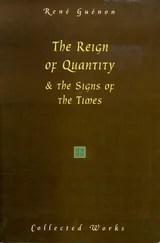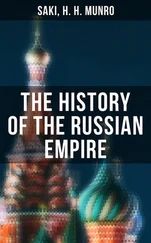Such was the tragical end of Alvaro de Luna; a man, who, for more than thirty years, controlled the counsels of the sovereign, or, to speak more properly, was himself the sovereign of Castile. His fate furnishes one of the most memorable lessons in history. It was not lost on his contemporaries; and the marquis of Santillana has made use of it to point the moral of perhaps the most pleasing of his didactic compositions. [41] John did not long survive his favorite's death, which he was seen afterwards to lament even with tears. Indeed, during the whole of the trial he had exhibited the most pitiable agitation, having twice issued and recalled his orders countermanding the constable's execution; and, had it not been for the superior constancy, or vindictive temper of the queen, he would probably have yielded to these impulses of returning affection. [42]
So far from deriving a wholesome warning from experience, John confided the entire direction of his kingdom to individuals not less interested, but possessed of far less enlarged capacities, than the former minister. Penetrated with remorse at the retrospect of his unprofitable life, and filled with melancholy presages of the future, the unhappy prince lamented to his faithful attendant Cibdareal, on his deathbed, that "he had not been born the son of a mechanic, instead of king of Castile." He died July 21st, 1454, after a reign of eight and forty years, if reign it may be called, which was more properly one protracted minority. John left one child by his first wife, Henry, who succeeded him on the throne; and by his second wife two others, Alfonso, then an infant, and Isabella, afterwards queen of Castile, the subject of the present narrative. She had scarcely reached her fourth year at the time of her father's decease, having been born on the 22d of April, 1451, at Madrigal. The king recommended his younger children to the especial care and protection of their brother Henry, and assigned the town of Cuellar, with its territory and a considerable sum of money, for the maintenance of the Infanta Isabella. [43]
[1] Sempere y Guarinos, Historia del Luxo, y de las Leyes Suntuarias de España, (Madrid, 1788,) tom. i. p. 171.
[2] Crónica de Enrique III., edicion de la Academia, (Madrid, 1780,) passim.—Crónica de Juan II., (Valencia, 1779,) p. 6.
[3] Crónica de Alvaro de Luna, edition de la Academia, (Madrid, 1784,) tit. 3, 5, 68, 74.—Guzman, Generaciones y Semblanzas, (Madrid, 1775,) cap. 33, 34.—Abarca, Reyes de Aragon, en Anales Históricos, (Madrid, 1682,) tom. i. fol. 227.—Crónica de Juan II., passim.—He possessed sixty towns and fortresses, and kept three thousand lances constantly in pay. Oviedo, Quincuagenas, MS.
[4] Guzman, Generaciones, cap. 33.—Crónica de Don Juan II., p. 491, et alibi. His complaisance for the favorite, indeed, must be admitted, if we believe Guzman, to have been of a most extraordinary kind. "E lo que con mayor maravilla se puede decir é oír, que aun en los autos naturales se dió así á la ordenanza del condestable, que seyendo él mozo bien complexionado, é teniendo á la reyna su muger moza y hermosa, si el condestable se lo contradixiese, no iria á dormir á su cama della." Ubi supra.
[5] Marina, Teoría de las Cortes, (Madrid, 1813,) tom. i. cap. 20.—tom. ii. pp. 216, 390, 391.—tom. iii. part. 2, no. 4.—Capmany, Práctica y Estilo de Celebrar Cortes en Aragon, Cataluña y Valencia, (Madrid, 1821,) pp. 234, 235.—Sempere, Histoire des Cortès d'Espagne, (Bordeaux, 1815,) ch. 18, 24.
[6] Several of this prince's laws for redressing the alleged grievances are incorporated in the great code of Philip II., (Recopilacion de las Leyes, (Madrid, 1640,) lib. 6, tit. 7, leyes 5, 7, 2,) which declares, in the most unequivocal language, the right of the commons to be consulted on all important matters. "Porque en los hechos arduos de nuestros reynos es necessario consejo de nuestros subditos, y naturales, especialmente de los procuradores de las nuestras ciudades, villas, y lugares de los nuestros reynos. " It was much easier to extort good laws from this monarch, than to enforce them.
[7] Mariana, Historia de España, (Madrid, 1780,) tom. ii. p. 299.
[8] Marina, Teoría, ubi supra.
[9] Capmany, Práctica y Estilo, p. 228.—Sempere, Hist. des Cortès, chap. 19.—Marina, Teoría, part. 1, cap. 16.—In 1656, the city of Palencia was content to repurchase its ancient right of representation from the crown, at an expense of 80,000 ducats.
[10] Capmany, Práctica y Estilo, p. 230.—Sempere, Histoire des Cortès d'Espagne, chap. 19.
[11] Marina, Teoría, tom. i. p. 161.
[12] See the ample collections of Sanchez, "Poesías Castellanas anteriores al Siglo XV." 4 tom. Madrid, 1779–1790.
[13] Guzman, Generaciones, cap. 33.—Gomez de Cibdareal, Centon Epistolario, (Madrid, 1775,) epist. 20, 49.—Cibdareal has given us a specimen of this royal criticism, which Juan de Mena, the subject of it, was courtier enough to adopt.
[14] Velazquez, Orígenes de la Poesía Castellana, (Málaga, 1797,) p. 45.— Sanchez, Poesías Castellanas, tom. i. p. 10.—"The Cancioneros Generales, in print and in manuscript," says Sanchez, "show the great number of dukes, counts, marquises, and other nobles, who cultivated this art."
[15] He was the grandson, not, as Sanchez supposes (tom. i. p.15), the son, of Alonso de Villena, the first marquis as well as constable created in Castile, descended from James II. of Aragon. (See Dormer, Enmiendas y Advertencias de Zurita, (Zaragoza, 1683,) pp. 371–376.) His mother was an illegitimate daughter of Henry II., of Castile. Guzman, Generaciones, cap. 28.—Salazar de Mendoza, Monarquía de España, (Madrid, 1770,) tom. i. pp. 203, 339.
[16] Guzman, Generaciones, cap. 28.—Juan de Mena introduces Villena into his "Laberinto," in an agreeable stanza, which has something of the mannerism of Dante.
"Aquel claro padre aquel dulce fuente
aquel que en el castolo monte resuena
es don Enrique Señor de Villena
honrra de España y del siglo presente," etc.
Juan de Mena, Obras, (Alcalá, 1566,) fol. 138.
[17] The recent Castilian translators of Bouterwek's History of Spanish Literature have fallen into an error in imputing the beautiful cancion of the "Querella de Amor" to Villena. It was composed by the Marquis of Santillana. (Bouterwek, Historia de la Literatura Española, traducida por Cortina y Hugalde y Mollinedo, (Madrid, 1829,) p. 196, and Sanchez, Poesías Castellanas, tom. i. pp. 38, 143.)
[18] Velazquez, Orígenes de la Poesía Castellana, p. 45.—Bouterwek, Literatura Española, trad. de Cortina y Mollinedo, nota S.
[19] See an abstract of it in Mayans y Siscar, Orígines de la Lengua Española, (Madrid, 1737,) tom. ii. pp. 321 et seq.
[20] Zurita, Anales de la Corona de Aragon, (Zaragoza, 1669,) tom. iii. p. 227.—Guzman, Generaciones, cap. 28.
[21] Centon Epistolario, epist. 66.—The bishop endeavored to transfer the blame of the conflagration to the king. There can be little doubt, however, that the good father infused the suspicions of necromancy into his master's bosom. "The angels," he says in one of his works, "who guarded Paradise, presented a treatise on magic to one of the posterity of Adam, from a copy of which Villena derived his science." (See Juan de Mena, Obras, fol. 139, glosa.) One would think that such an orthodox source might have justified Villena in the use of it.
[22] Comp. Juan de Mena, Obras, copl. 127, 128; and Nic. Antonio, Bibliotheca Vetus, tom. ii. p. 220.
[23] Pulgar, Claros Varones de Castilla, y Letras, (Madrid, 1755,) tit. 4.—Nic. Antonio, Bibliotheca Vetus, lib. 10, cap. 9.—Quincuagenas de Gonzalo de Oviedo, MS., batalla 1, quinc. 1, dial. 8.
[24] Garcilasso de la Vega, Obras, ed. de Herrera, (1580,) pp. 75, 76—Sanchez, Poesías Castellanas, tom. i. p. 21.—Boscan, Obras, (1543,) fol. 19.—It must be admitted, however, that the attempt was premature, and that it required a riper stage of the language to give a permanent character to the innovation.
Читать дальше












